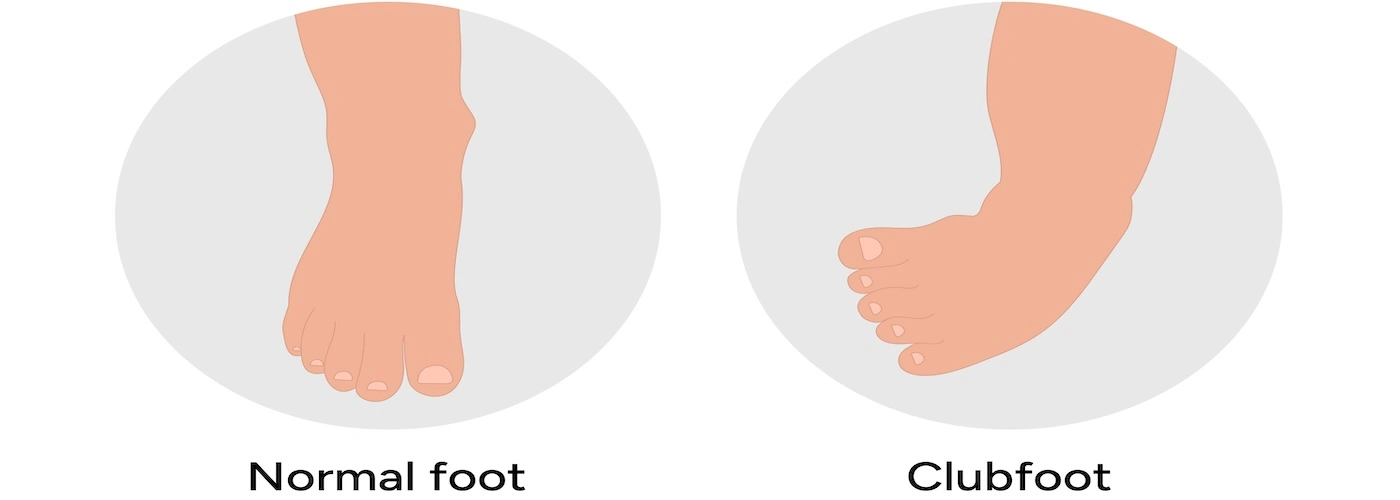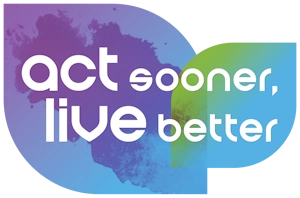
Clubfoot, also known as Congenital Talipes Equino Varus, is a deformity where the forefoot is abnormally twisted in relation to the lower leg bone, causing the foot to point inward and downward.
This condition can develop in either one or both feet and is present at birth. Clubfoot occurs in approximately 1 in every 1,000 live births, making it one of the more common congenital foot deformities. Prompt treatment is essential to correct the deformity and ensure proper foot function.
Types of Clubfoot
The two types of Clubfoot are:
- Postural Clubfoot that includes muscle imbalance and/or tightness, however there is essentially no bone or joint involvement.
- Structural Clubfoot that includes the bone and joints of the foot, where the child’s foot is unable to go through the full spectrum of movements
Clubfoot Causes
The two causes of Clubfoot are related to relatives with a family history (genetics) and intrauterine positioning. An issue with the spinal cord can cause severe cases.
Clubfoot Symptoms
Clubfoot is common after the birth of your child when the feet are turned inwards. It can occur in either one or both feet.
The common symptoms of clubfoot are:
- The calf muscle and the affected foot can be smaller than usual.
- There may be difficulties in movement.
- The forefoot is abnormally twisted to the lower leg bone, causing the foot to point inward and downward.
Clubfoot Treatment
Understanding the primary treatments for clubfoot is crucial for effective management. Here are the main approaches, including the Ponseti technique, bracing, and surgical intervention:
Ponseti Technique
- Casting: This involves gradual correction through serial casting, starting ideally within the first week of birth. The foot is manipulated and cast in stages to achieve proper alignment, typically requiring 5 to 9 casts. Manipulation of the feet and cast application are used to achieve gradual correction.
- Achilles Tenotomy: A small incision to release the tight heel cord is performed if necessary (in about 80% of cases). This small incision to release the tight heel cord might be required.
- Bracing: Following casting, bracing with a boot and bar maintain the correction. This involves full-time wear initially, then part-time for up to three years. Bracing will be required for up to three years to maintain correction.
Bracing
- Maintenance Phase: Bracing is essential to maintaining the correction achieved after the casting phase. The brace should be worn 24 hours a day for the first three months, then reduced to part-time wear for up to three years.
Surgical Intervention
- Tendon Transfer: In cases of recurrence or residual deformities, particularly in older children, tendon transfer (such as the tibialis anterior transfer) may be needed to balance foot muscles. Tendon transfer at the foot may be required in cases of recurrence in an older child.
- Additional Procedures: Depending on the severity of the condition, other surgical interventions, such as open Achilles lengthening, may be required.
Complications and Related Diseases
Understanding the potential complications and related issues is crucial for effective clubfoot treatment. These complications include:
- Recurrence: The most common complication, with up to an 80% recurrence rate, is due to poor compliance with the maintenance period using boots and bars. Proper counseling and support for families are essential.
- Surgical risks: When surgery is needed, risks include infection and damage to surrounding structures. Aggressive surgical interventions, such as extensive soft tissue release, should be avoided to prevent long-term complications like arthritis, overcorrection, mechanical weakness, and avascular necrosis.
- Abnormal walking pattern and foot pain: Incorrect foot positioning can lead to an abnormal walking pattern and foot pain, which may develop over time if the condition is not properly managed.
Prevention of Clubfoot
While clubfoot cannot be entirely prevented, good healthcare before and during pregnancy can reduce risks. Consider a preconception checkup to ensure optimal health.
If you are at high risk, consult a genetic counselor and check for infections. During pregnancy, attend all prenatal appointments, avoid smoking, and alcohol and use only approved medications.
Ensuring a Healthy Start with Gleneagles Hospitals
Proper healthcare before and during pregnancy is crucial in reducing the risk of clubfoot and ensuring a healthy start for your baby.
At Gleneagles Hospitals, we provide comprehensive prenatal care and access to genetic counseling to support you through a healthy pregnancy. With our expert medical team and state-of-the-art facilities, we are committed to helping you and your baby achieve the best possible outcomes.
Schedule a consultation with the team of O&G and Paediatrics Orthopaedics specialists today at your nearest Gleneagles Hospital.







